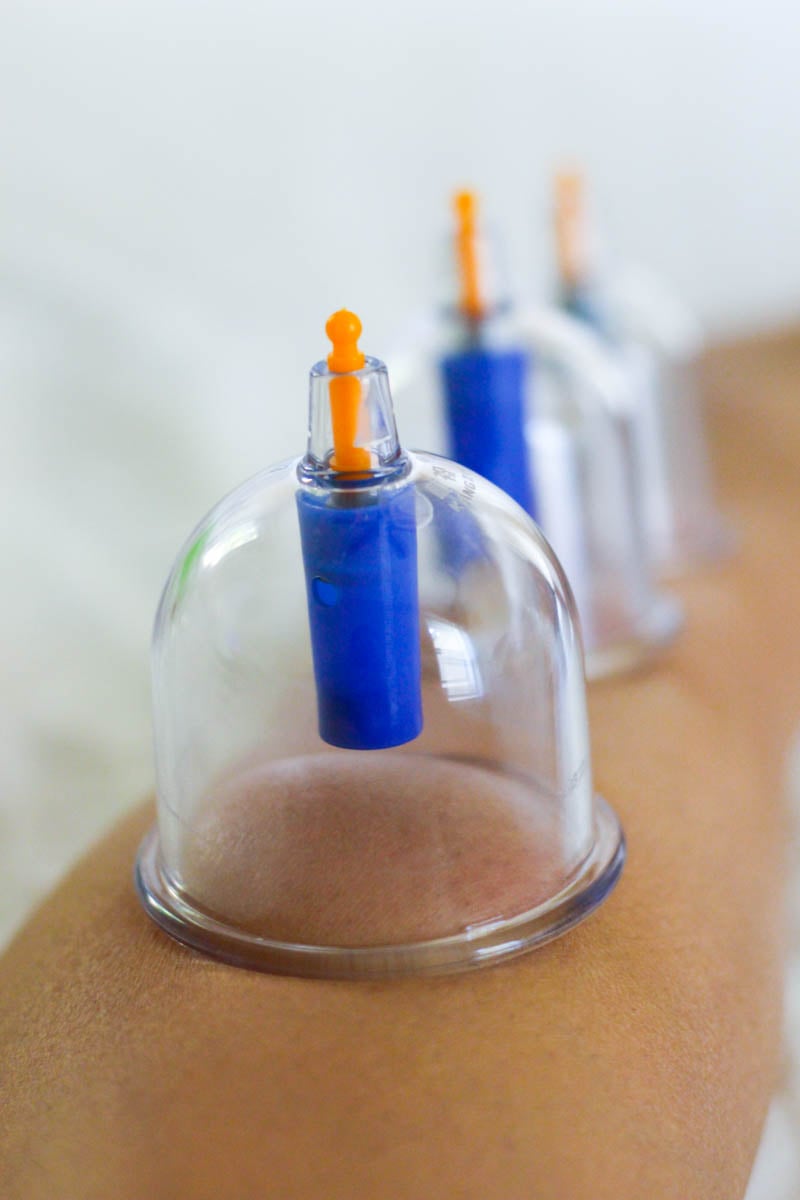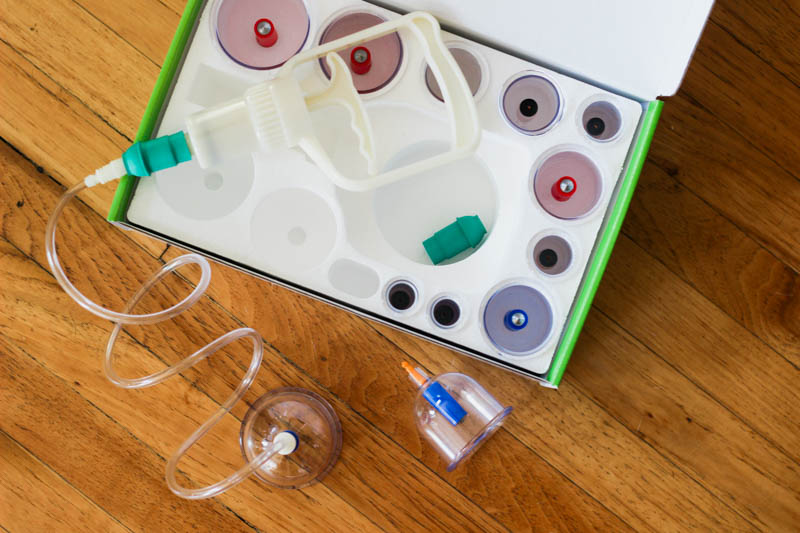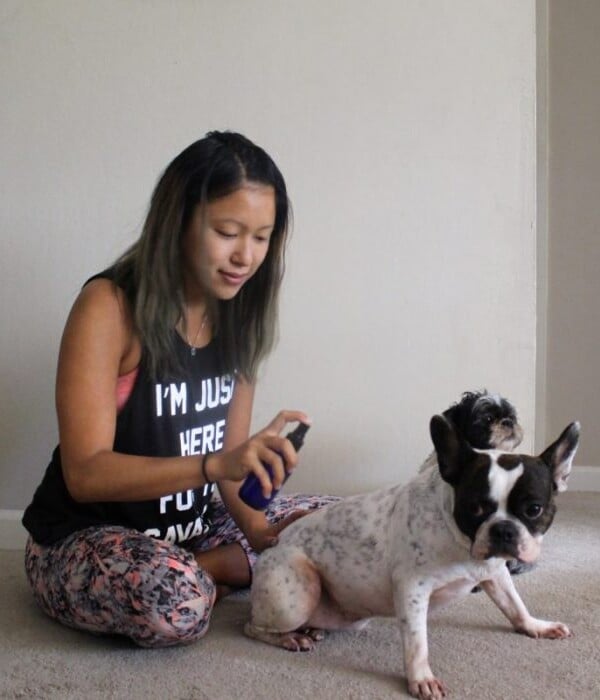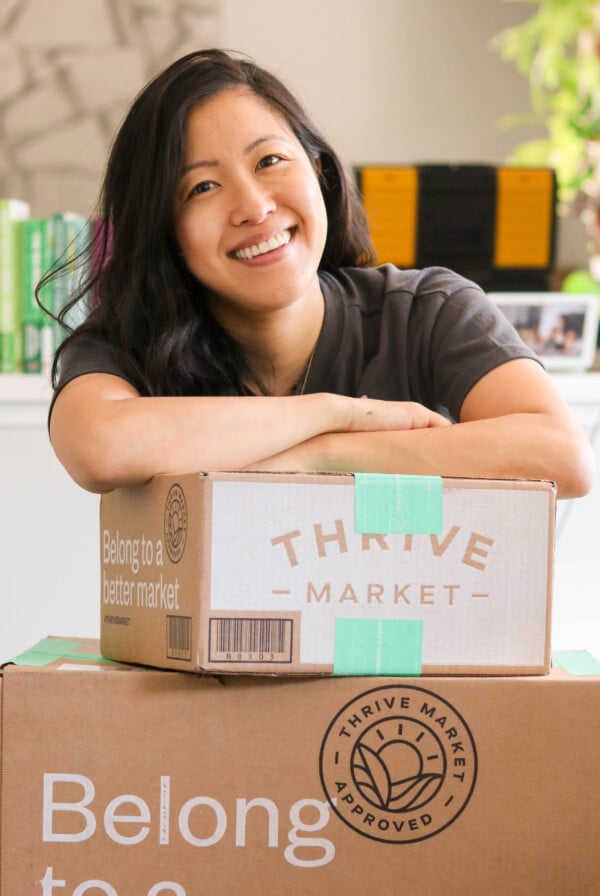This post may contain affiliate links. Please see our disclosure policy.
Learn all about my experience with cupping therapy (what it is and its benefits), and I answer some of the most common questions I receive about cupping.
A little over a month ago, I had my first cupping experience with a local acupuncturist after hearing about all the benefits on social media. I remember when my dad used to get cupping done while growing up, and seeing the marks on my grandma when I was young. I knew it had to do with acupuncture, but I never really knew what exactly it was and what it did.
It was only recently that I started hearing more and more about it again, from Olympic athletes and wellness articles. The more I learned about it and its benefits, I really wanted to try it out because I love experimenting with various holistic therapies and I think it’s incredible how many different healing methods are out there.
My Personal Experience
I was a little nervous my first time because I had no idea what to expect. Will it hurt? How long will it take? What exactly is the process? Thankfully, the acupuncturist I met with was super friendly and answered all my questions about the process and what to expect. When I told her that I have chronic shoulder and neck cramps, especially when I’m stressed, those were the areas she decided to concentrate on.
She told me to take off my shirt and had me lie face down on a massage table. Then she got right to it. She placed small glass cups on my neck and back and used a pump to suck the pressure out of them so they stay in place. I definitely felt the pressure but it felt REALLY GOOD. It was like getting a massage but instead of pressing down on the skin, cupping does the opposite by sucking out the skin. It felt so relieving on my tight muscles that I started falling asleep.
And as soon as it began, it was over. The acupuncturist walked back in and took the cups off of me. My immediate reaction was how loose my tight muscles have gotten and how much less pain I was in. I felt so relaxed like I just got a massage, and slept really well that night.
The second thing I noticed once I got home were the round bruises where the cups were placed that I’ve seen before on other people. They were dark and purple and lasted about 5 days. I didn’t really mind them because I could easily hide them by wearing a t-shirt.
I enjoyed my cupping experience so much that I went back for it 4 more times since, and left loving it even more every time. It’s one of those really pleasant, stress-relieving therapies that I looked forward to, and the more I went, the bruises that resulted were lighter and lighter. I cannot recommend cupping enough and I think everyone should try it at least once.
Cupping Q&A
Now that I’ve shared my own experience with cupping therapy, I pooled together some of the most common questions I received on Instagram and decided to answer them for you. With the ones I didn’t know the answers to, I asked my acupuncturist who was happy to provide me with more information. Hope these answer any curiosity and/or anxiety you may have about cupping therapy!
What exactly is cupping therapy?
Cupping, specifically dry cupping, is a traditional Chinese healing therapy that uses cups to create suctions to pull skin, muscle, and tissues outward. It’s almost an opposite of a massage, in which pressure is applied toward the body. Usually done in addition to acupuncture, cupping has been around for thousands of years.
There are different materials that I’ve seen for the actual cups, from glass, plastic, to even bamboo, but idea is the same. The cups are placed on skin and the air is suctioned out, creating a vacuum and the skin is pulled up toward the cups.
It is known to be extremely beneficial for circulation, releasing tension, detoxification, and relieving pain. It’s great for stress relief, fatigue, pain, constipation, headaches, anxiety, muscle tension, flu, allergies, and even some skin conditions.
Is it painful?
It wasn’t for me, but it might be if you have sensitive skin. You’ll feel a sharp tightness where the cups are placed, and if you do feel pain, you can let the acupuncturist know and he or she will move it or lessen the pressure. Mostly, it’s a really relaxing and pleasant feeling
How long is each session?
It depends on your specific treatment, but generally, it lasts for 15-30 minutes.
How dark are the bruises and how long do they last?
The bruises depend on how much congestion you have in the body. My acupuncturist described this as “stagnation,” which means you have low blood circulation or in need of lymph drainage. Those who are relatively healthy should have light to no marks, and those who are going through more pain have darker marks that may last up to a week. Usually, your acupuncturist can determine your body’s health state by looking at the color and the darkness level of the bruises.
How often can I do it?
This is also dependent on your case. Some people can get cupping done as often as 3 times per week, but it’s generally recommended to let your bruise fully heal before the next session. I suggest working with an acupuncturist to determine the best interval for you.
Does it work?
If you ask me, my answer is HECK YES. I’ve experienced such relief in pain and anxiety with each cupping session. However, not enough well conducted studies have been done to scientifically prove the effectiveness of cupping therapy. There’s money in testing out a new drug, but there really isn’t with holistic therapies like this, so I’m not surprised I wasn’t able to find a whole lot of research on it. I suggest you try it out yourself to determine if it works for your or not. It’s a relatively cost-effective treatment compared to other holistic healing methods.
Which part of the body can you use cupping?
Almost anywhere that needs relief, but the most common area is the neck and the back. Fleshy areas work best. I’ve gotten it done around my ankle area when I recently sprained it, and it was extremely helpful in relieving pain and soreness.
Can you do it at home?
Yes! In fact, I just bought an at-home cupping kit a few weeks back and I’ve been loving it. If you have acute symptoms that need specific attention, I would suggest you consult with your acupuncturist first. But for general back tension, I’ve been using this cupping therapy set about once a week and it works just as well as when I get it done from my acupuncturist. However, I highly recommend you get it done from a professional a few times before attempting to do it at home to get yourself comfortable with the process and see how your body reacts to it.
The best part of the at-home kit is that it comes with a long tube to connect the cups to the suction gun, so you can do it to yourself on the parts that are more difficult to reach. My husband gets weirded out about the whole concept (what a wuss) and he refuses to do it for me on harder-to-reach areas, so I’ve been doing it to myself and it’s easy and works great! Check it out HERE.
If you have any anxiety or reservations about trying out cupping therapy, I hope this post helps you feel more at ease and get you to try it out! I only have positive things to say about it and it’s been such a help in my healing journey. If you have any more questions, don’t hesitate to contact me!
Regarding other affiliate links and affiliate relationships: In order for me to support my blogging activities, I may receive monetary compensation or other types of remuneration for my endorsement, recommendation, testimonial and/or link to any products or services from this blog. Thank you for your support and understanding.









I am interested in starting cupping, but worried that the product you linked to looks a bit flimsy, like it won’t last very long.
Are you still using it and does it still work well after several months?
I totally still use it! It’s made out of glass so it’ll last a while.
That’s incredible! It has helped so much for my stress and adrenal fatigue issues.
You definitely should! It’s seriously harmless. 🙂